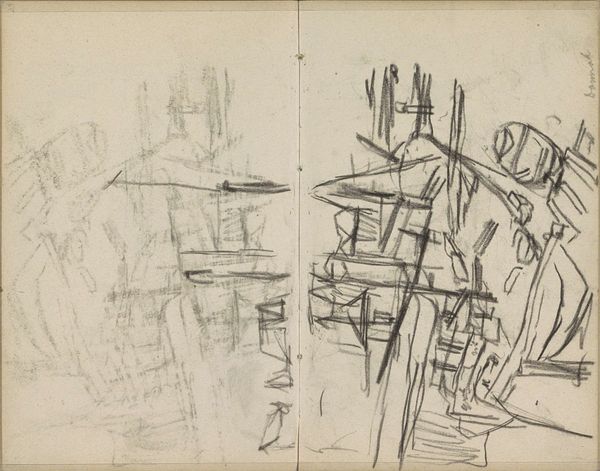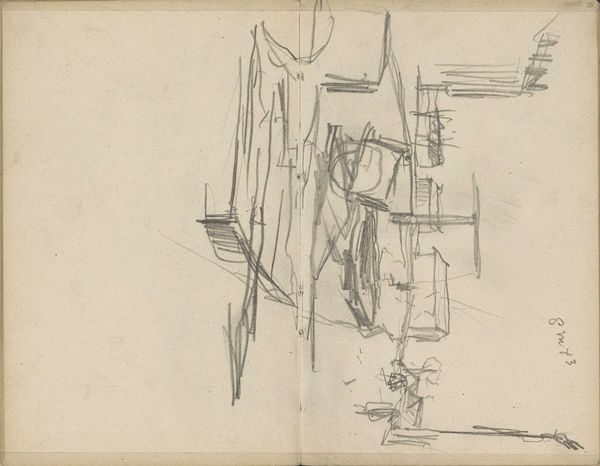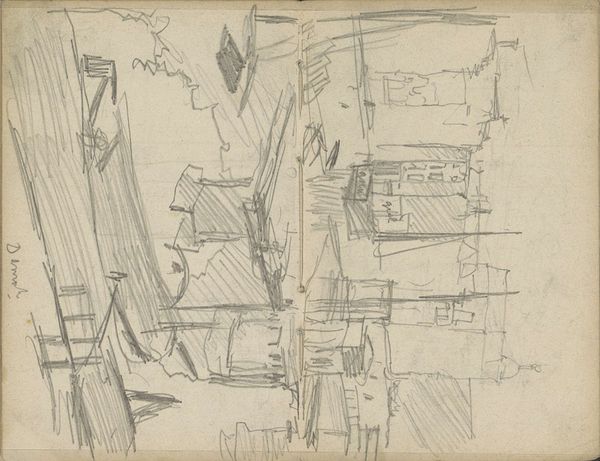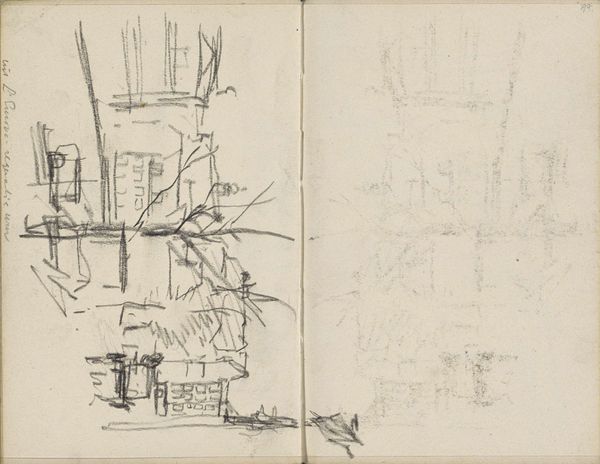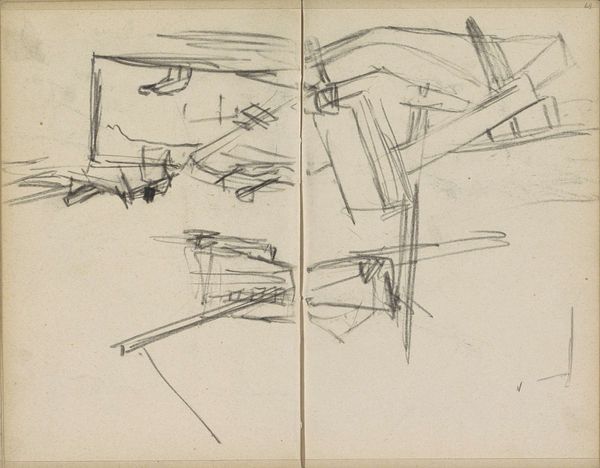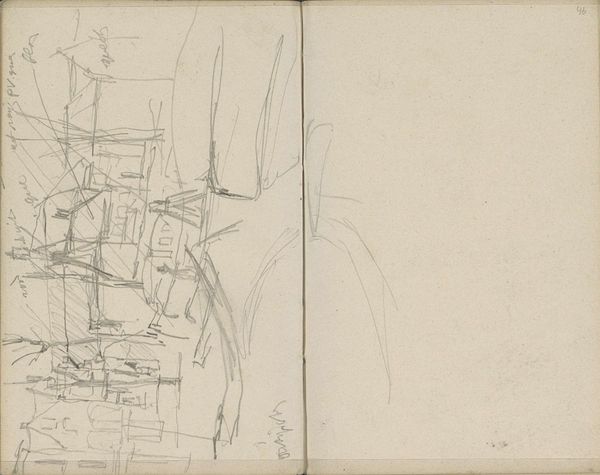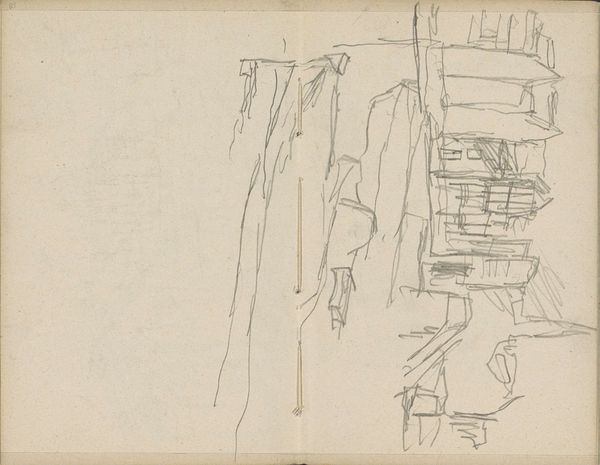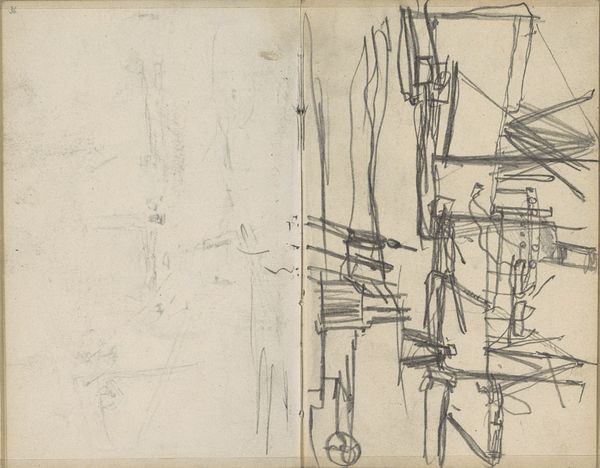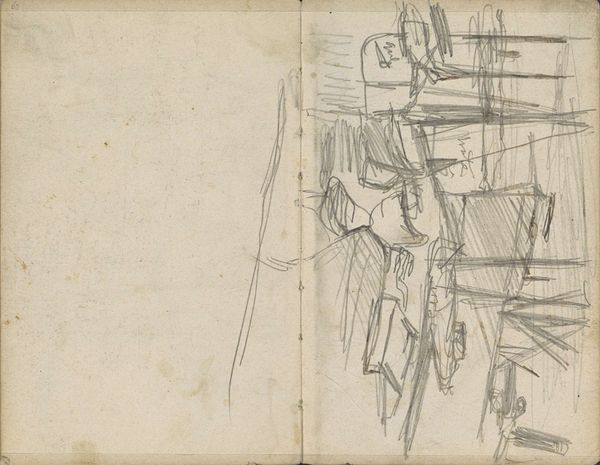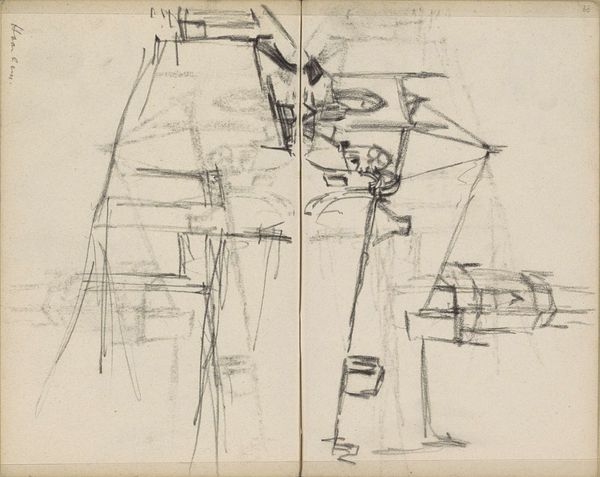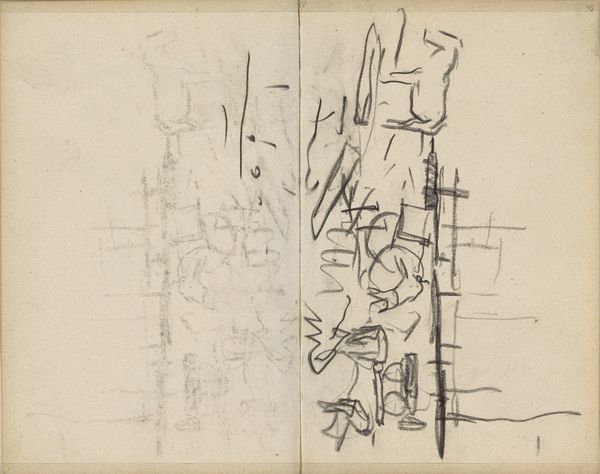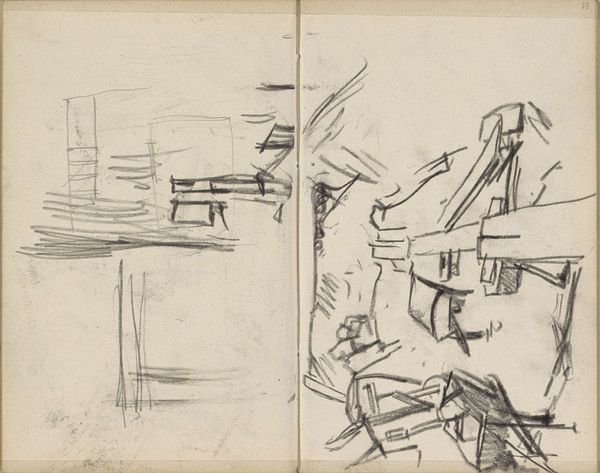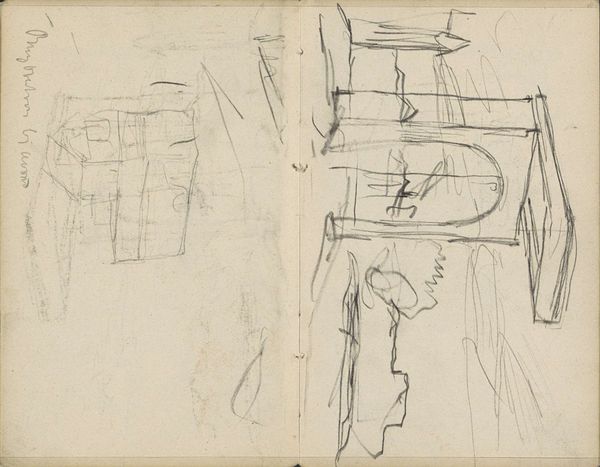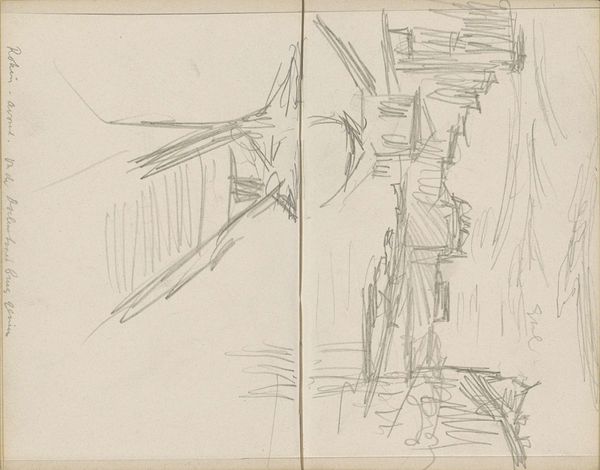
Gezicht op boten, mogelijk aan het Damrak te Amsterdam c. 1906 - 1923
0:00
0:00
Copyright: Rijks Museum: Open Domain
Editor: Okay, next up we have "View of boats, possibly on the Damrak in Amsterdam" by George Hendrik Breitner, dating from around 1906 to 1923. It’s a pencil and pen sketch, part of a sketchbook. The quick, almost frantic lines give it such an immediate, fleeting quality. What captures your attention most about this piece? Curator: What I find particularly interesting is how this sketch functions within Breitner's larger practice. Breitner was known for his photography and using those photos as source material for his paintings, so how do sketches like this factor into his creative process? Is it preliminary work for paintings, or something else entirely? The sketchbook format is quite intimate, suggesting a personal, perhaps even diaristic function. Editor: That's interesting – a diary in sketches. Do you think this provides us a more direct window into his thought process, unfiltered by the constraints of a finished artwork intended for public consumption? Curator: Precisely. Consider the socio-political context: Amsterdam was a rapidly changing city at the turn of the century, and Breitner was deeply invested in documenting urban life. This sketch, seemingly spontaneous, can also be seen as a deliberate act of observation and recording, contributing to a larger project of capturing a specific moment in Amsterdam's history. The loose, impressionistic style further emphasizes the ephemeral nature of urban experience. Editor: It makes you wonder about the role of the sketchbook itself – was it a private space for exploration or a portable studio? Curator: It's likely both. Artists' sketchbooks occupy an interesting space between private and public. They are working documents, yet also potential sites for artistic display, something to consider when examining the display of art from personal sketchbooks. Editor: I’m starting to see how this unassuming sketch connects to broader themes of urban life, artistic process, and even the politics of representation. Thanks! Curator: Indeed. And thinking about art in terms of its cultural context really changes the way we interpret such a simple-seeming sketch. It shows that even the most casual-looking work can reveal significant aspects of an artist and their time.
Comments
No comments
Be the first to comment and join the conversation on the ultimate creative platform.
